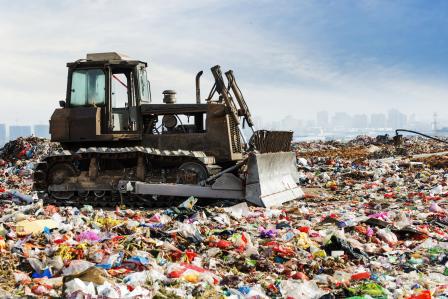Environmental Benefits of Anaerobic Digestion (AD)
- Diversion of Organics from Landfills
- Renewable Energy Generation
- Soil Health Benefits
- Methane Emissions Reduction
- Manure Management
Diversion of Organics from Landfills
- Food scraps from residential properties;

- Food scraps from businesses (e.g., restaurants);
- Commercial food processing waste;
- Fats, oils and greases; and
- Yard waste.
Renewable Energy Generation
When organic materials are anaerobically digested, biogas is created. Biogas is a renewable source of energy.
Learn more about renewable energy
Biogas can be used to power engines and generators to produce mechanical power, heat and/or electricity or a combination of these uses. It can also be compressed for vehicle fuel and after treatment can be used in similar applications as natural gas.
Learn more about how biogas is used
Soil Health Benefits
It is important to maintain soils that are healthy and  productive to grow food to feed our local, national and world populations.
productive to grow food to feed our local, national and world populations.
Anaerobic digestion produces digestate, a nutrient-rich slurry. Digestate can be applied to agricultural land as a fertilizer and/or soil amendment to improve soil health. Digestate that is applied to land is subject to both state and federal regulations.
Technology exists to separate the digestate into solid and liquid components, which may be managed individually for reuse or further treatment. For example, the solid component may be heat-dried to produce fertilizer pellets or composted prior to land application.
The practice of land application of digestate can improve the health of our soils. Soil benefits can include:
-
Increasing organic matter content;
-
Reducing the need to apply chemical fertilizers and pesticides;
-
Improving plant growth;
-
Reducing soil erosion and nutrient runoff;
-
Alleviating soil compaction; and
-
Helping increase the soil’s water retention ability, which reduces the need for irrigation.
To insure that land application is properly done, a nutrient and soil management plan is required in most states.
Methane Emissions Reduction
Manure Management
-
Reduce methane emissions from manure lagoons, stockpiles and storage ponds;
-
Minimize odors and pathogens;
-
Generate products for use on the farm, such as animal bedding and high quality fertilizer; and
-
Reduce solids content.
In order to increase biogas production, livestock manure may also be combined or "co-digested" into anaerobic digesters along with other organic materials.
Learn more about the benefits of biogas recovery on farms
